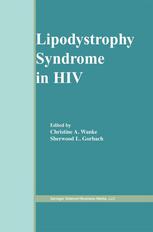

Most ebook files are in PDF format, so you can easily read them using various software such as Foxit Reader or directly on the Google Chrome browser.
Some ebook files are released by publishers in other formats such as .awz, .mobi, .epub, .fb2, etc. You may need to install specific software to read these formats on mobile/PC, such as Calibre.
Please read the tutorial at this link: https://ebookbell.com/faq
We offer FREE conversion to the popular formats you request; however, this may take some time. Therefore, right after payment, please email us, and we will try to provide the service as quickly as possible.
For some exceptional file formats or broken links (if any), please refrain from opening any disputes. Instead, email us first, and we will try to assist within a maximum of 6 hours.
EbookBell Team

4.8
74 reviewsThe evolution ofdata about the HIV-Associated Lipodystrophy Syndrome has been rapid. The syndrome itself is complex and controversial. Although great progress has been made in understanding epidemiology and etiology of the syndrome, much about the syndrome remains mysterious. It was our intention to assist HIV providers with a framework for understanding the status and complexities ofthe field. Each author was requested to provide an evidence-based discussion of a topic for which they have expertise. While it is impossible that such a volume be completely comprehensive, we believe that the approach of this book will allow the reader to develop a relatively complete snapshot of the syndrome. We also believe that the reader of this volume will be able to confront the emerging literature on the HIV-associated lipodystrophy syndrome with a critical eye and that the volume will provide a context in which to place additional data as they are published.